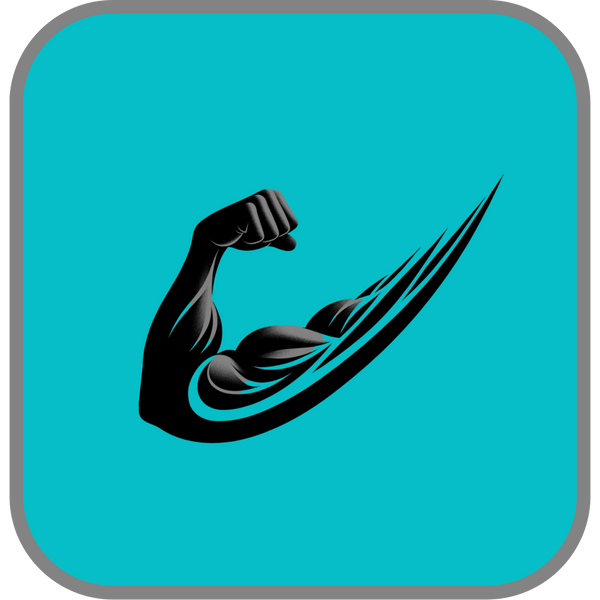Introduction
In the pursuit of a well-rounded workout routine, understanding the significance of a pull day is paramount. Pull day workouts play a pivotal role in sculpting a balanced and robust physique. This article will delve into the world of pull day workouts, offering insights, exercises, and expert guidance to help you make the most out of your training regimen.
Section 1: Understanding Pull Day Workouts
Unveiling the Essence of Pull Day Workouts
Before we dive into the exercises, let's clarify what a pull day workout entails. A pull day is a crucial component of overall fitness routines, primarily targeting muscle groups like the back and biceps. These workouts bring diversity to your training regimen, ensuring that your body remains challenged and responsive to growth.
Section 2: Top Pull Day Exercises
1. Pull-ups
Pull-ups are the cornerstone of any pull day routine. They engage a wide range of upper body muscles, making them indispensable for building strength and endurance.
2. Chin-ups
Chin-ups offer a slight variation from pull-ups, focusing more on the biceps and providing an excellent complement to your routine.
3. Bent-over Rows
Bent-over rows are a potent exercise for developing a strong and well-defined back. Mastering this movement is essential for a comprehensive pull day.
4. Lat Pulldowns
Lat pulldowns are a versatile exercise that can be customized to target specific areas of the back, ensuring a balanced development.
5. Face Pulls
Face pulls work wonders for your upper back and shoulders, promoting better posture and overall stability.
6. Cable Rows
Cable rows offer constant tension throughout the movement, aiding in muscle growth and definition.
7. Bicep Curls
While bicep curls are often associated with arm day, incorporating them into your pull day can further enhance your upper body strength.
Section 3: Improving Pull-up Strength
Strengthening Your Pull-ups
If mastering pull-ups is a challenge, fear not. There are several strategies to enhance your pull-up performance:
- Use Assisted Pull-up Machines or Bands: These tools reduce the weight you need to lift, making pull-ups more achievable.
- Incorporate Negative Reps: Slowly lower yourself during the negative phase of the exercise to build strength effectively.
- Increase Frequency and Consistency: Practice makes perfect. Incorporate pull-ups into your routine more often to see progress.
- Include Isometric Holds: Pausing at the top of your pull-up engages your muscles and builds endurance.
Section 4: Pull-up vs. Chin-up: Which is Right for You?
Deciphering the Differences
Pull-ups and chin-ups may seem similar, but they target different muscle groups:
- Pull-ups: Emphasize the back and shoulders.
- Chin-ups: Focus on the biceps and upper chest.
Choosing between them depends on your fitness goals and which muscle groups you aim to prioritize.
Section 5: Deadlifts: Pull Day or Leg Day?
The Deadlift Dilemma
Deadlifts are a topic of debate in workout routines. They engage both the back and legs, blurring the line between pull day and leg day. The decision ultimately rests on your fitness objectives.
Section 6: Injury Prevention and Safety
Prioritizing Safety
Safety is paramount in any workout routine. To prevent injuries during pull day exercises, consider the following:
- Proper Form and Technique: Always maintain correct posture and technique.
- Warm-up Routine: Prepare your muscles with a thorough warm-up.
- Injury Prevention: Learn how to avoid common injuries associated with pull day exercises.
Section 7: Reps and Sets: Optimizing Your Pull Day
Crafting the Perfect Reps and Sets
Understanding the ideal rep and set range for each exercise is key:
- Strength vs. Hypertrophy: Tailor your reps and sets to your specific goals.
- Progressive Overload: Gradually increase the weight and intensity to spur growth.
Section 8: Home Workouts: Pull Day Without Gym Equipment
Effective Home Workouts
You can have an impactful pull day workout even without gym equipment. Here are some exercises that work well at home:
- Resistance Bands: These versatile tools can mimic the resistance provided by weights.
- Bodyweight Exercises: Utilize your body weight for exercises like push-ups and body rows.
Section 9: Resistance Bands for Pull Day Exercises
Harnessing the Power of Resistance Bands
Resistance bands offer unique benefits for pull day workouts:
- Targeted Muscle Engagement: They allow you to focus on specific muscle groups.
- Adjustable Resistance: Choose the right band to match your strength level.
Section 10: Pull Day Routines for Different Fitness Levels
Tailoring Pull Day to Your Fitness Level
We've got you covered, whether you're a beginner, intermediate, or advanced lifter:
- Progression: Gradually increase the intensity as you improve.
- Variations: Explore different exercises and techniques to keep things fresh.
Section 11: Frequency of Pull Day Workouts
Finding the Right Balance
Determining how often to incorporate pull day workouts into your weekly routine requires careful consideration:
- Recovery: Allow adequate time for muscle recovery.
- Other Workout Days: Consider your overall workout schedule.
- Individual Goals: Align your pull day frequency with your fitness objectives.
Section 12: Common Mistakes to Avoid on Pull Day
Steering Clear of Pitfalls
Be aware of common errors that can hinder your progress:
- Improper Form: Correct posture is essential to avoid injury.
- Overtraining: Don't push your body beyond its limits.
- Neglecting Rest: Ensure you allow your muscles to recover.
Conclusion: Elevate Your Pull Day Workout
In conclusion, mastering your pull day routine is a vital step in achieving your fitness goals and crafting a strong, balanced physique. By following the insights and recommendations in this comprehensive guide, whether you're a beginner or an experienced lifter, you can optimize your pull day routine. Consistency, proper form, and adaptation to your individual needs are the keys to success. Start pulling your way to a healthier, stronger you today!


